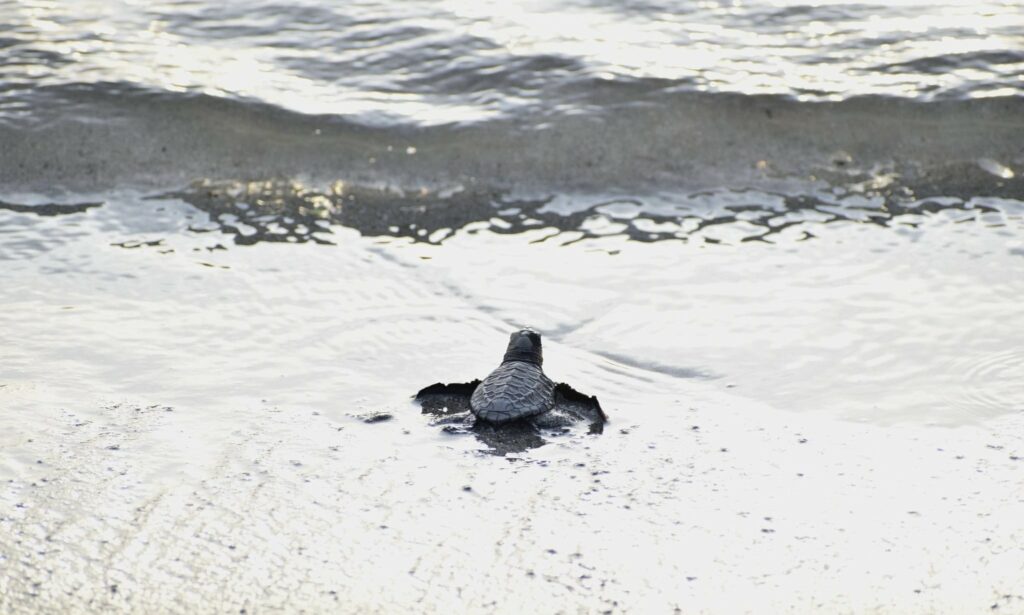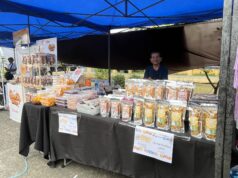In an inspiring initiative to foster environmental stewardship among the youth, the Philippine Information Agency (PIA) Regional Office in Central Luzon has partnered with the Department of Environment and Natural Resources (DENR) to conduct the Kilos Kabataan para sa Saribuhay [Biodiversity] forum.
This forum is a call to action, aiming to ignite a passion for biodiversity conservation and natural resources management among young Filipinos.
The fourth leg of the forum welcomed around 50 campus journalists and students from Bataan Peninsula State University, Limay Polytechnic College, and Maritime Academy of Asia and the Pacific.
These young minds gathered to explore their potential role in preserving the environment and to understand the critical link between healthy ecosystems and human well-being.
The critical role of storytelling in environmental conservation

Environmental storytelling is more than just a narrative—it’s a powerful tool to connect people with the urgency of biodiversity conservation.
Healthy ecosystems are vital to human life, influencing everything from the air we breathe to the food we eat.
Degraded forests, polluted oceans, and contaminated rivers directly threaten our well-being.
There is a pressing need for more voices to tell these stories—stories that highlight the impacts of climate change, showcase community efforts to protect the environment, and inspire individuals to contribute to these efforts.
Freelance journalist Jewel Cabrera emphasized that anyone can become an environmental storyteller.
“Environmental issues intersect with various aspects of life, including health, agriculture, food security, livelihood, disaster management, and the economy,” she said.
Cabrera introduced the “LET’S GO!” framework to guide the youth in environmental advocacy: Learn more by being curious, following environmental organizations, and engaging in educational content; Explore and discover by visiting natural sites responsibly and connecting with local communities; Transform habits by adopting sustainable practices and rethinking consumption patterns; Spread the word by sharing knowledge and advocating for change; Get involved by volunteering and taking action; and Offer skills by utilizing personal expertise to advocate for the environment.
Understanding biodiversity and its imperatives

Biodiversity includes genetic diversity, ecosystem diversity, and species diversity.
Each type is crucial for the health of our planet. Genetic diversity allows species to adapt to changes, ecosystem diversity ensures resilience, and species diversity supports complex food webs.
DENR Communications Development Officer Joshua Rei Ubaldo explained that the Philippines boasts about 3,355 conservation imperative sites covering 53,816 square kilometers.
“Each of these sites is critical for the survival of various species, many of which are unique to our country,” he emphasized.
He highlighted the unique faunal regions of the Philippines, such as Greater Luzon, Mindoro, West Visayas, Greater Mindanao, and the Sulu Islands, each home to species that do not cross into other regions.
Ubaldo also pointed out the rich biodiversity in Central Luzon’s Subic Bay and Bataan forests, which host the world’s largest bats and critical nesting grounds for marine turtles.
“The coasts of Bagac and Morong in Bataan are known nesting grounds for three out of five species of marine turtles in the country: the Olive Ridley, Hawksbill, and Green Sea Turtle,” Ubaldo noted.
He appealed to students to volunteer at the Pawikan Conservation Center in Morong, Bataan.
“Volunteers are needed to monitor and protect turtle nests to ensure the survival of these species,” he said.
Ubaldo also introduced the Manila Bay Cleanup and Rehabilitation program, emphasizing the importance of maintaining clean waters in the province to protect the nesting grounds of these marine turtles.
“Properly disposing of trash and keeping waters clean start with our daily practices at home,” he urged.
Engaging the youth in conservation efforts

The youth are deeply intertwined with the rich biodiversity and natural resources of the Philippines.
From the food on our tables to the livelihoods we depend on, our lives are intricately linked to the gifts we receive from nature.
Recognizing this connection is essential for fostering a movement towards environmental stewardship.
PIA Central Luzon Assistant Regional Head Carlo Lorenzo Datu called on the youth to take action. “Collective efforts are crucial in shaping a brighter, more resilient future,” he underscored.
Maritime Academy of Asia and the Pacific campus journalist Mark Angelo Jabonete echoed this call, encouraging his peers to engage in simple yet impactful acts of environmental care, such as coastal cleanups and urban gardening.
“The maritime industry plays a significant role in environmental protection. If such a large industry is concerned about the environment, individuals should be too,” he said.
The forum highlighted the crucial role of the youth in ensuring a sustainable future. By equipping young people with knowledge and encouraging active participation, initiatives like the Kilos Kabataan para sa Saribuhay pave the way for a more environmentally conscious generation ready to tackle the challenges of biodiversity conservation and natural resources management.
Through such initiatives, the youth are not just passive recipients of information but active participants in the fight to preserve our planet’s biodiversity. Their involvement today will shape the environmental legacy of tomorrow. (CLJD/RPQ, PIA Region 3-Bataan)





